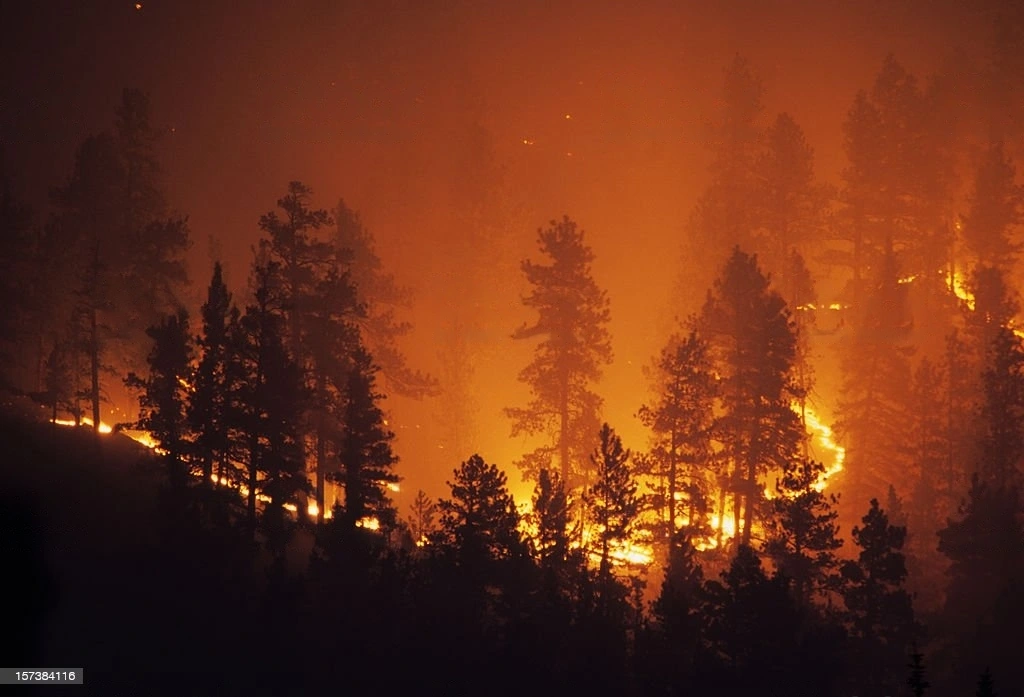Amidst the challenges the 21st century has thrown our way, environmental changes stand out as particularly daunting. As the summers grow longer and hotter, wildfire occurrences have escalated in number and intensity. The consequences are felt globally, whether it’s the bushfires in Australia, the forest fires in the Amazon, or the raging wildfires in California.
But why are these fires and their smoky aftermath such a grave concern? As vast tracts of land burn, large volumes of smoke are released into the atmosphere. This isn’t just any smoke; it’s a cocktail of harmful substances that can pose severe health risks.
Why Wildfire Smoke Is So Dangerous
When wood and other organic materials burn, they release a mix of harmful gases and microscopic particles into the air. This combustion process creates a dangerous mixture. But what makes wildfire smoke particularly hazardous?
- Fine Particulate Matter (PM2.5): These particles are less than 2.5 micrometres in diameter and can penetrate deep into our lungs and even enter the bloodstream. Their minuscule size allows them to bypass our natural respiratory defence mechanisms.
- Volatile Organic Compounds (VOCs): Emitted as gases from certain solids or liquids, VOCs include a variety of chemicals, some of which may have short- and long-term adverse health effects.
- Carbon Monoxide (CO): A clear, odourless gas that can be harmful when inhaled in large amounts. It reduces the oxygen delivery capacities of our blood, posing specific risks to those with heart conditions.
What are the health risks of smoke exposure?
Smoke doesn’t discriminate. While certain groups may be more vulnerable, all can feel its effects. Here are some potential health impacts:
- Immediate Symptoms: These can range from minor irritations such as a scratchy throat, cough, or stinging eyes to more severe symptoms like shortness of breath, chest pain, or dizziness.
- Respiratory Issues: Individuals with pre-existing conditions such as asthma or chronic obstructive pulmonary disease (COPD) can experience exacerbations.
- Heart Concerns: Exposure can lead to inflammation and may increase the risk of heart attack in those with heart conditions.
- Long-term Implications: Prolonged exposure or repeated episodes over time can reduce lung function and could lead to the development of respiratory and heart diseases.
Children, elderly individuals, and pregnant women face heightened risks due to physiological reasons, like developing organs or weakened immune systems.
Monitoring Wildfire Activity
In the age of information, being forewarned is forearmed. Tracking wildfire activity and understanding the air quality around us is pivotal.
Oizom stands out in this tech-driven initiative. Their cutting-edge air quality monitors detect common pollutants and provide real-time data on particulate matter and harmful gases. Such devices, equipped with advanced sensors and analytical capabilities, allow users to make informed decisions about outdoor activities, thereby significantly reducing exposure risks.
For instance, if you reside in a region prone to wildfires, Oizom’s monitor can send out timely alerts, allowing you to take preventive measures before the smoky haze becomes visible.
Experience the blend of technology and environmental safety. Explore Oizom’s range of air quality monitors.
How to Protect Yourself From Wildfire Smoke
In an era of increasing environmental challenges, safeguarding our health from external threats becomes paramount. With the pervasive nature of wildfire smoke, protection doesn’t just stem from reactive measures but also from well-thought-out proactivity. Let’s explore this in detail:
Keep Exercise Indoors and to a Minimum:
The health benefits of exercise are undeniable. However, during times when the air quality plummets due to wildfire smoke, adjustments to our fitness routines are essential.
Why Limit Outdoor Activities?
- Increased Respiratory Rate: Physical activities increase our breathing rate, leading to a higher intake of polluted air. This puts strain on the respiratory system and allows more fine particles to penetrate deep into the lungs.
- Vulnerability of Athletes: Athletes or those with a rigorous outdoor fitness routine often have heightened lung capacities, meaning they can inhale more pollutants per breath than an average individual.
Adapting to the Situation:
- Shift your routine to indoor venues. Gyms with good air circulation systems, home workouts, or even indoor swimming pools can be safer alternatives.
- If you must exercise outdoors, do it during times when the air quality is better, usually early in the morning or later in the evening. However, always refer to real-time air quality indices – tools like Oizom’s monitors can be invaluable here.
Consider Using an Air Purifier
Modern homes designed for energy efficiency often lack sufficient ventilation, leading to trapped indoor pollutants. Adding wildfire smoke to this mix can render indoor air potentially harmful.
Benefits of Air Purifiers:
- Particle Removal: High-efficiency particulate Air (HEPA) filters in air purifiers can effectively remove up to 99.97% of particles as small as 0.3 microns, including PM2.5.
- Reduction of VOCs: Some purifiers come with activated carbon filters, which can adsorb gases and VOCs, reducing their concentrations indoors.
Choosing the Right Purifier:
- Ensure it’s suitable for your room size. A device too small may be ineffective, while an oversized one could consume unnecessary power.
- Opt for purifiers with a genuine HEPA filter and an activated carbon filter for comprehensive protection.
Wear an N95 Mask
In smoky conditions, the masks we wear for daily protection against viruses may not suffice. The N95 respirator is designed to offer a higher degree of protection.
Why N95?
Filtration Capabilities: The N95 mask can filter out at least 95% of airborne particles, including the fine particulates found in smoke.
Fit: Unlike regular masks, N95 masks are designed to seal around the nose and mouth, preventing the inhalation of unfiltered air.
Usage Tips:
- Ensure a proper fit. An ill-fitting mask reduces its effectiveness considerably.
- Remember that while they filter particulates effectively, N95 masks do not filter out gases like carbon monoxide.
Avoid going outside
It may sound obvious, but limiting exposure is one of the most effective ways to protect oneself.
- Stay informed about local air quality using tools like Portable air quality monitors.
- Plan any necessary trips outside when the air quality is predicted to improve.
- Create a ‘clean room’ in your home where you can retreat to. This space should be well-sealed against outside air, equipped with an air purifier, and used as a sanctuary during the worst air quality periods.
Prioritize your health amidst environmental challenges. Delve into Oizom’s solutions to stay informed and protected.
Conclusion
We are, without a doubt, living in an age of environmental unpredictability. The rise in wildfire occurrences, especially events like Canada Wildfire Smoke is a stark reminder of the delicate balance of our ecosystem. However, we can navigate these challenges effectively with informed choices, technological advancements like Oizom’s air quality monitors, and a proactive attitude.
Empowerment in this context stems from awareness and the judicious use of available resources. As the adage goes, “Prevention is better than cure.” In the face of environmental adversity, this couldn’t be more accurate.






